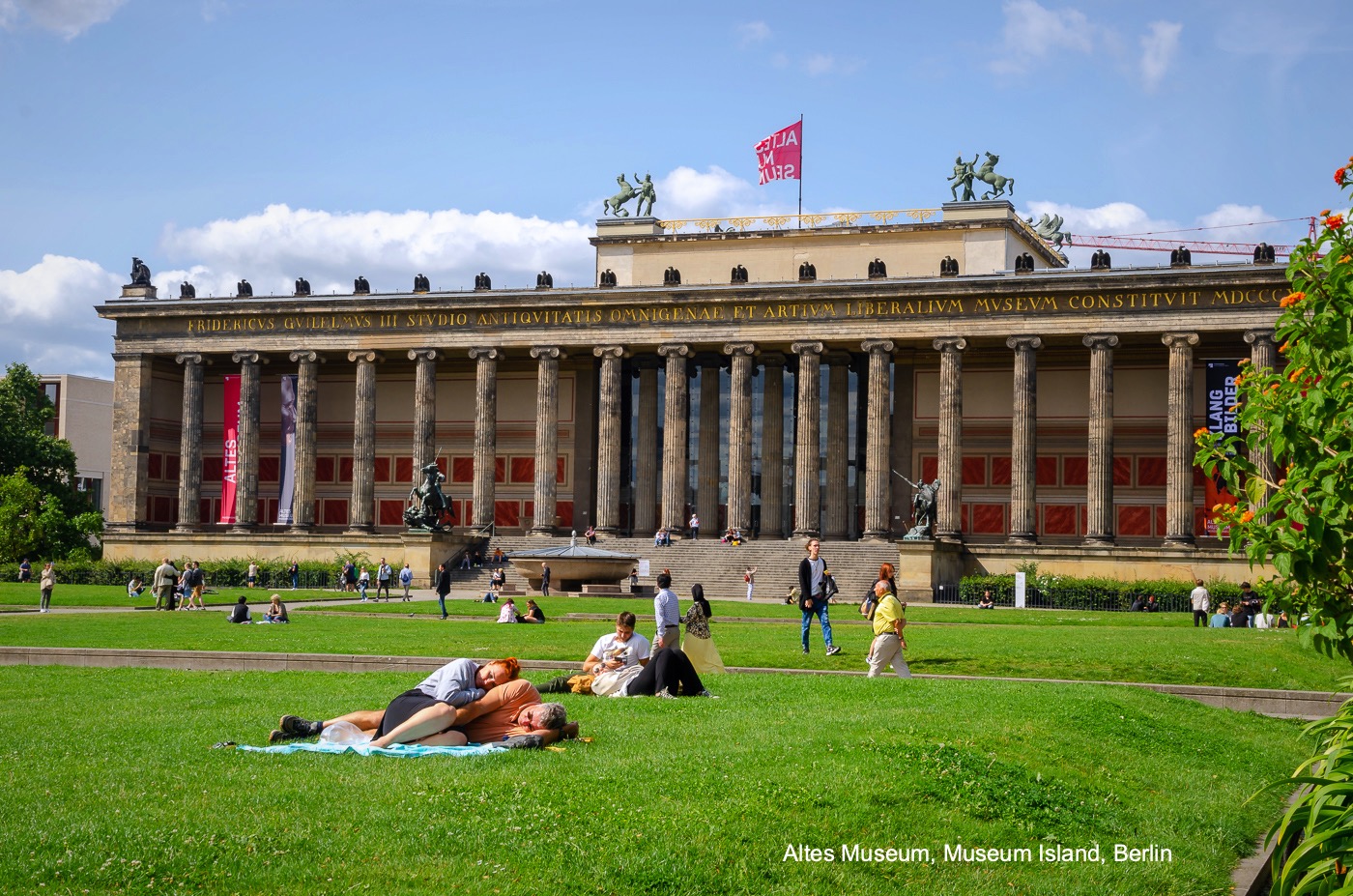I finally made it to Berlin, the capital of Germany and a cultural, political and commercial powerhouse for centuries. I was eager to see if it would live up to its reputation as a city tolerant of alternative lifestyles and immigrants amid a galaxy of museums, a wide variety of architectural styles and a plethora of historical landmarks. Well, it didn’t just meet my expectations, but exceeded them!
Berlin has a history of cultural and intellectual achievements, especially before WWI and during the Weimar Republic (1919 to 1933), where the Bauhaus architectural movement started, several eventual Nobel Prize winners in science lived including Albert Einstein and an animated social scene existed as depicted by the book and movie “Cabaret.” This cultural explosion was mostly at odds with Germany’s military imperialism and extreme nationalist movements such as the Nazis. As a result, Berlin has continually been a city of opportunity and tension, forever recreating itself.
A mere 32 years ago, Berlin was divided between the democratic West and Soviet-controlled East. There are a few places where the wall remains and others which have markers in the street where it stood.
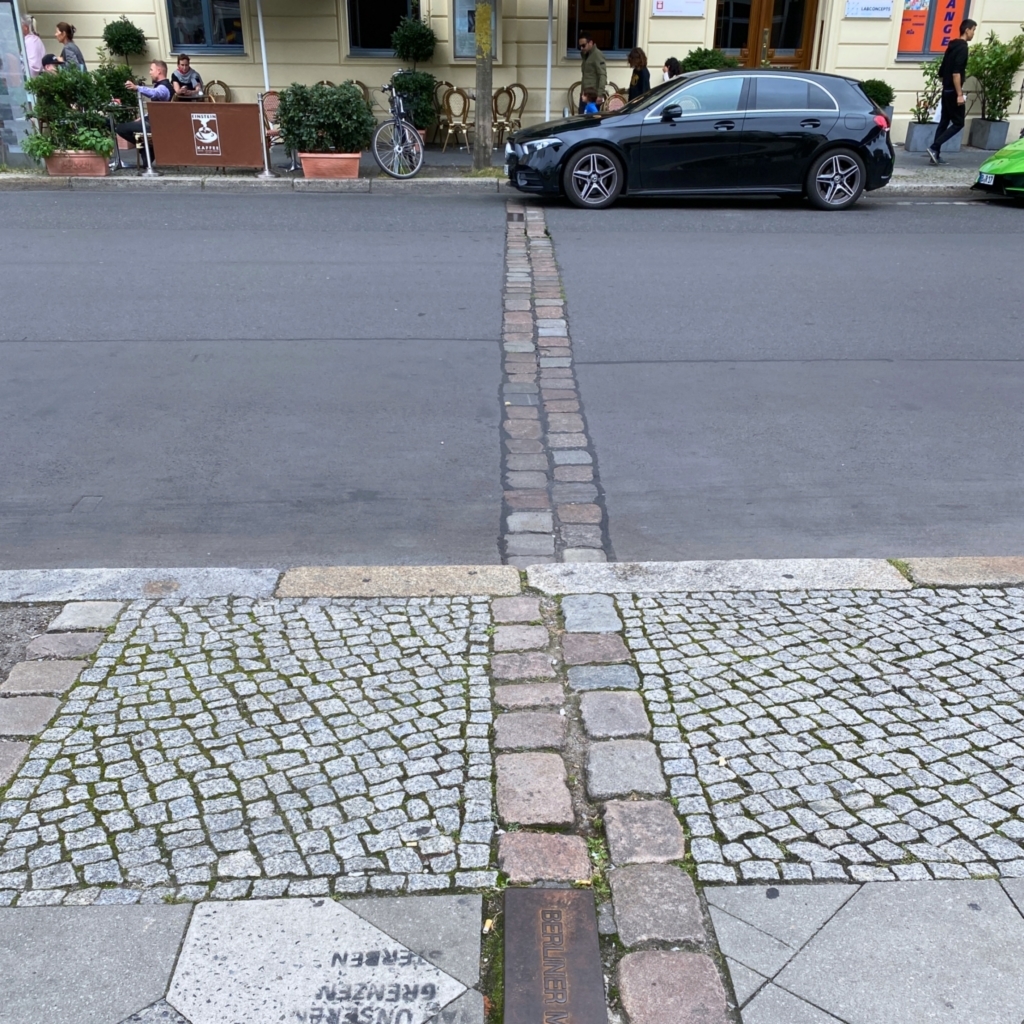
When the Berlin Wall fell, the Iron Curtain came down and Berlin united. West and East Germany were expected to blend together seamlessly, but after four decades of living apart, it was quite a difficult transition. Perhaps East Berlin merged more easily than the rest of the former Communist state because of Berlin’s culture of tolerance and acceptance.
This post is one personal journey in the current manifestation of dynamic Berlin. You can spend weeks here flitting among attractions from many historical periods while dining, drinking and dancing in a profusion of restaurants, cafes and bars.
Why We Went to Berlin
In August and September 2021, my wife Khadija and I went on a five-week drive through Eastern Europe and visited many of the great cities of the region. We allocated the most time to Berlin, four-full days, which allowed us to touch the surface of what the city offers. Our plan was to split our time among the hipster neighborhoods, world-class museums and historical landmarks. Of course, we improvised every day.
While we were there, music venues, nightclubs and performing arts spaces were closed because of covid.
Is Berlin Safe?
Berlin is a safe city, especially in the tourist areas. There are two things to be aware of but not worry about: pickpockets and scams such as fake police asking for and keeping IDs and shell games where you never win. Here, as everywhere you travel, employ basic safety precautions and use common sense to avoid problems.
Is Berlin Expensive?
Berlin is the cheapest capital city in Western Europe. Everything seems affordable and with a little effort and planning you can enjoy yourself inexpensively. Prices have risen some, especially for housing, which doesn’t directly affect the visitor.
Where to Eat in Berlin
There are so many establishments serving excellent food in Berlin, you can only sample a few. There were two we really liked.
In Kreuzberg, we ate at Hasir Restaurant serving Turkish cuisine and ever-turning kabob (they have other locations in Berlin). We had tender lamb chops, well spiced chicken and Turkish pudding for dessert.
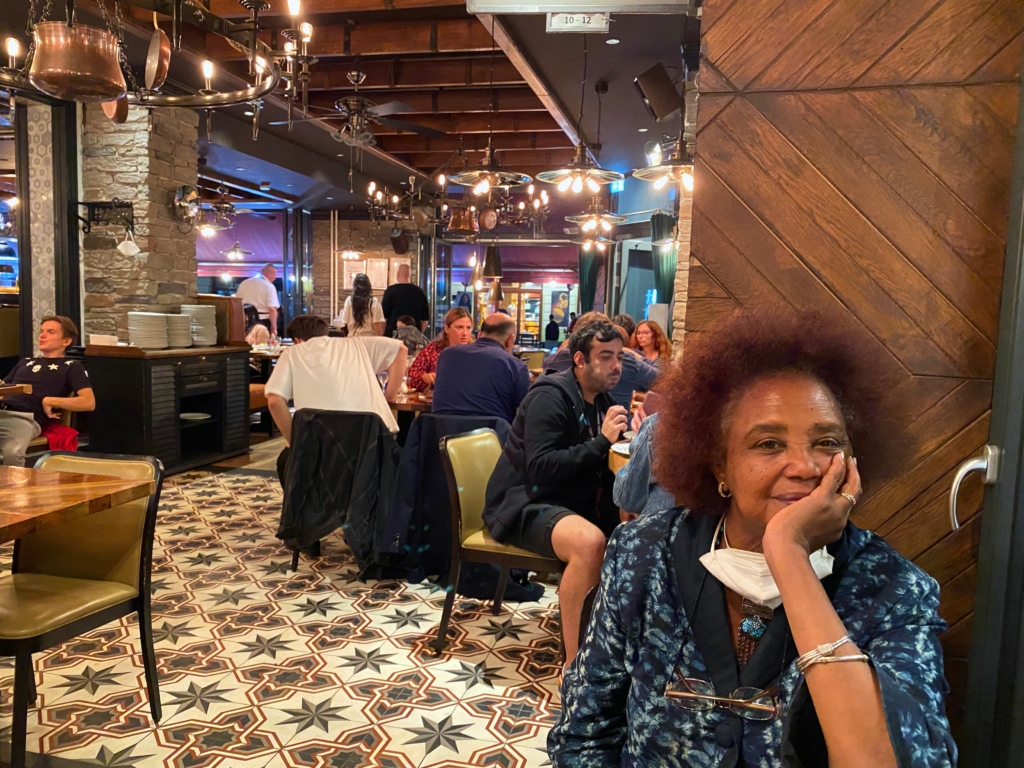
While there, we met Ben and Samina, a married couple and restaurateurs. He’s from Israel and she’s from the UK with some ancestry in Pakistan.
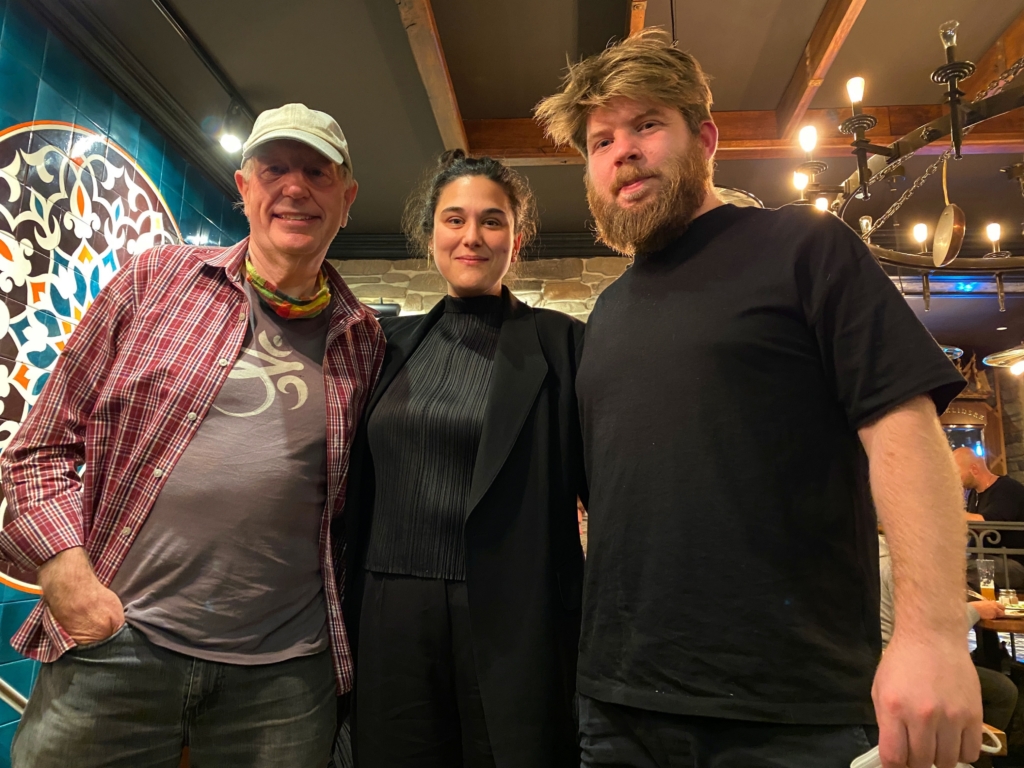
With their help, we were able to get reservations at their upscale restaurant, Mrs. Robinson’s which has a set menu for each night and highlights using every part of the animal so there is no waste.

Our second dish is pictured above, line-caught turbot (flatfish from the Northeastern Atlantic), turnips and chicken in bone sauce. Dining here was a memorable experience and highly recommended.
How to Get Around Berlin
Berlin is a big city, bigger than the five boroughs and surrounding water of New York City. We had a car but parked it the whole time. We used the U-Bahn (ten lines of mostly underground subway) and buses, except one late night we used Uber. There’s also the S-Bahn which is mostly above ground and travels from the central city to outlying areas.
The subway is fun because of the ever changing mix of people…
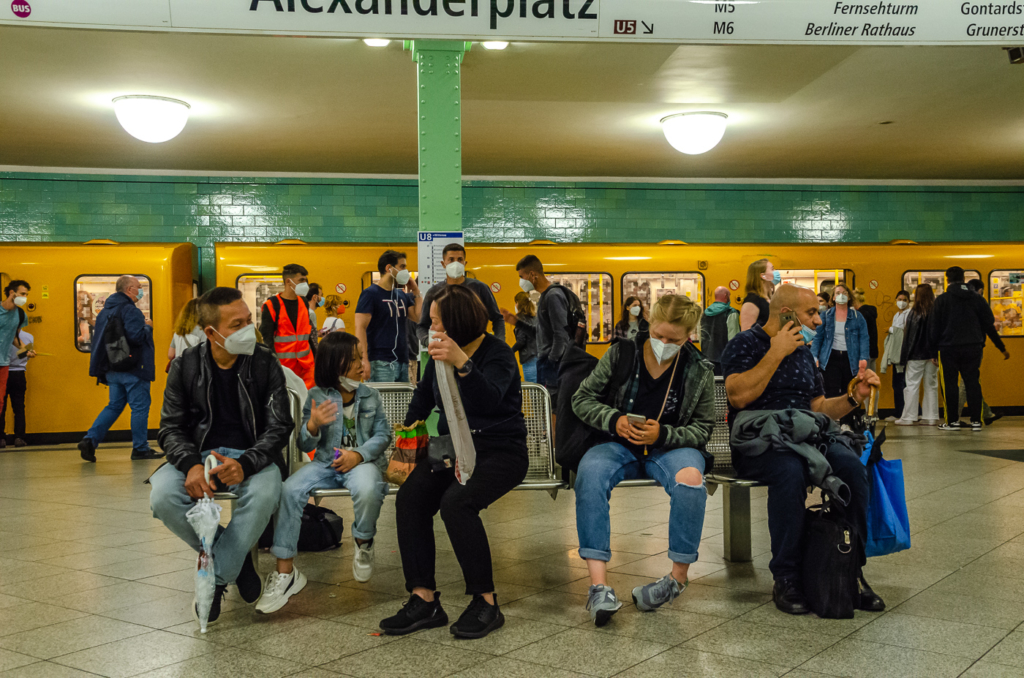
Including this woman with tattooed boot laces.

Buses are sometimes a better option and provide glimpses into the neighborhoods.
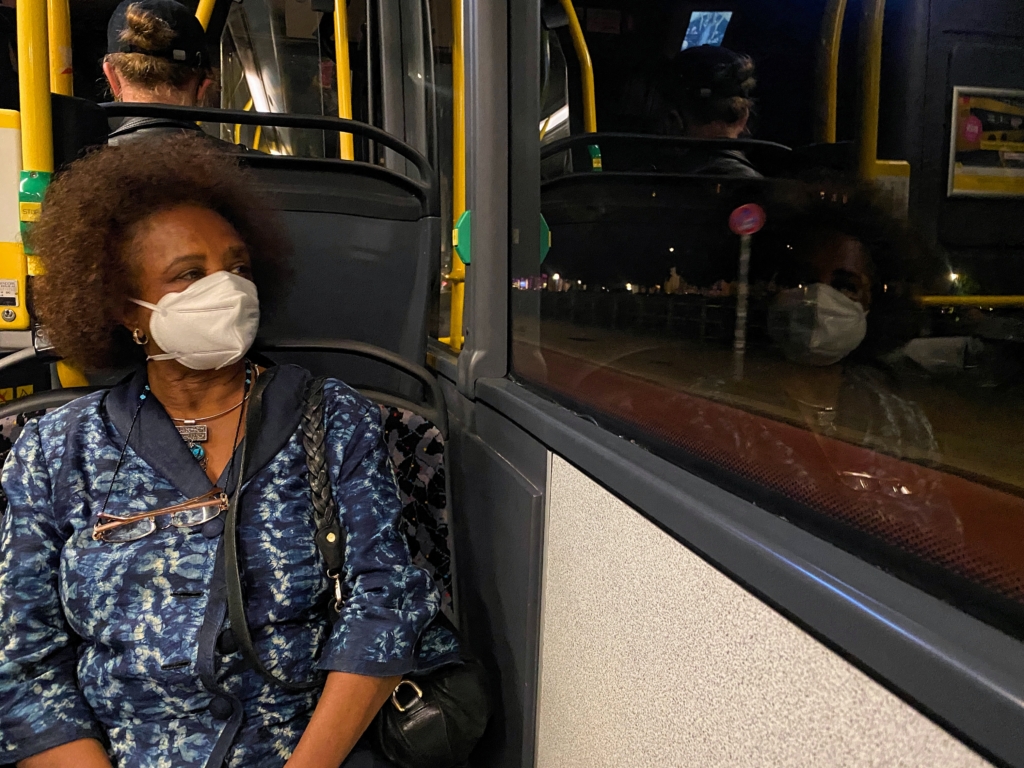
Bicycles (and scooters, like the one you had as a kid but now electrified) are everywhere in Berlin.
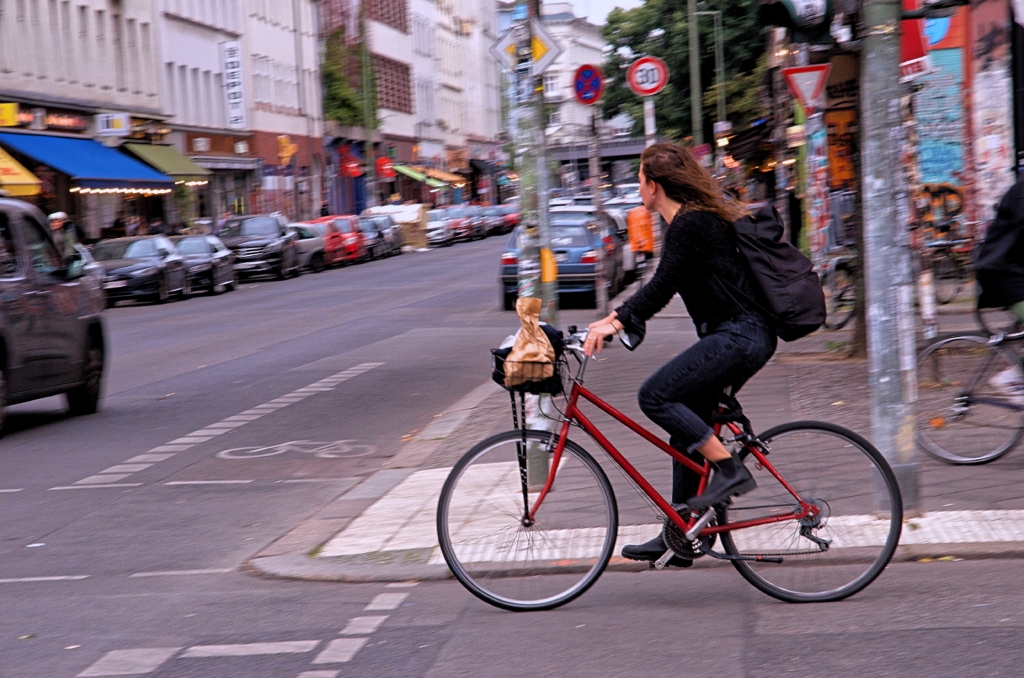
You can rent bicycles and scooters and sometimes leave them wherever you are finished, as the rental companies pick them up or have other renters find them. A good number of bicycles have been modified to carry everything from packages to babies. We had to keep an eye out for bikes while we were walking, as many bike paths are on sidewalks, unlike in New York City.
Speaking of transportation, the only Trabants we saw was in a nostalgic museum collection of them.
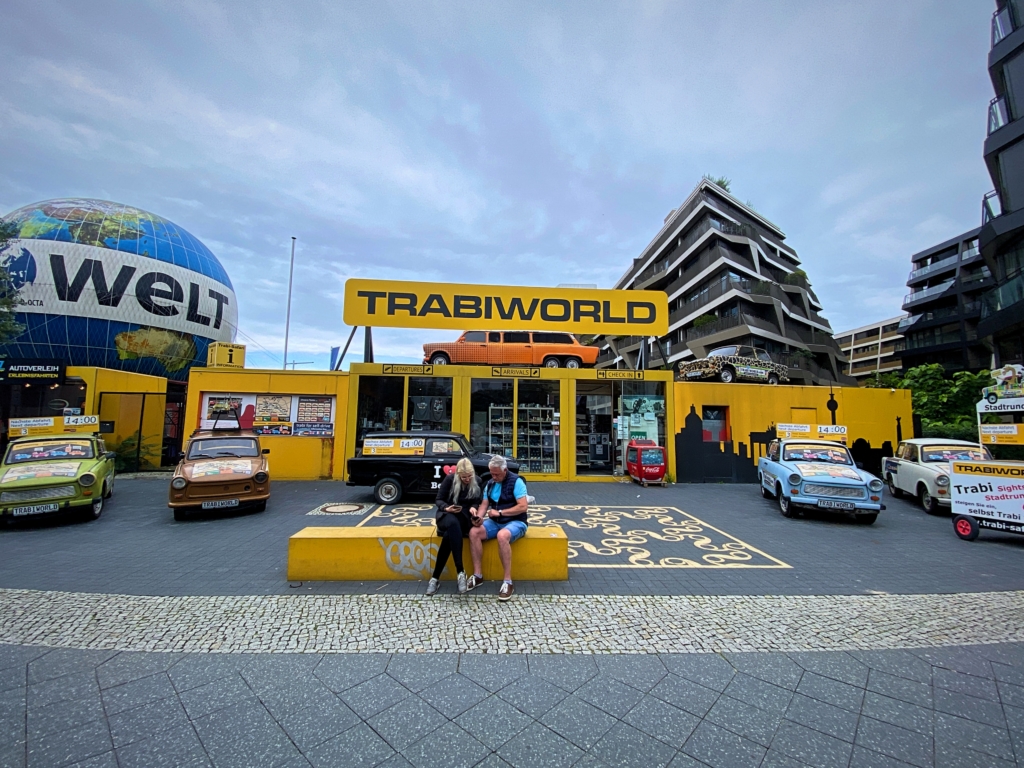
These East German cars were ubiquitous in Eastern Europe during Soviet times because they were inexpensive and easy to fix.
Our trip was by no means an exhaustive exploration of Berlin, but here are places we went.
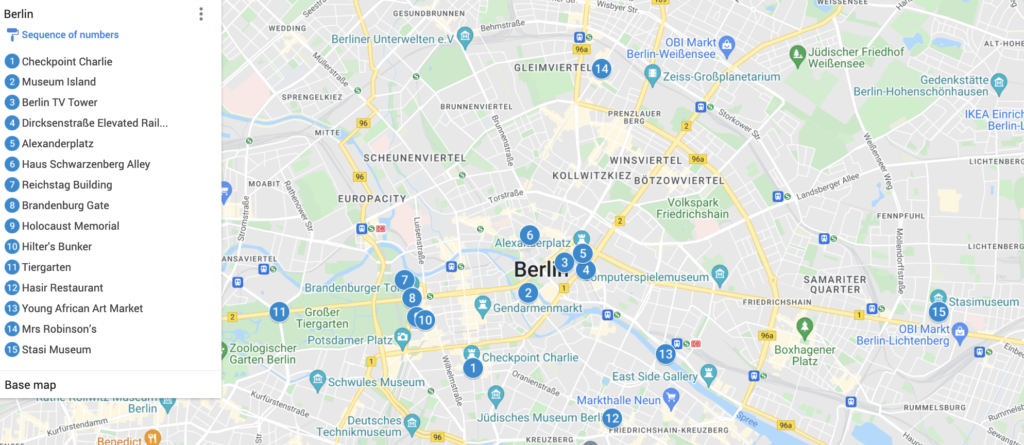
Two books which may be helpful are Fodor’s Inside Berlin and National Geographic’s Walking Berlin.
Free Walking Tours
Berlin has many free walking tours every day (no charge, tips are expected). We were fortunate to go on two excellent ones.
Will of Walkative Tours is from the UK and has extensive knowledge of German history. His tours concentrated on historical places in the center of the city. His explanations were concise, exciting stories relating to landmarks in a visceral way. For example, his description of the Holocaust Memorial vividly portrayed the effect the designers wanted and achieved. He’s one of the best guides we’ve had in any city and we have been on many walking tours.
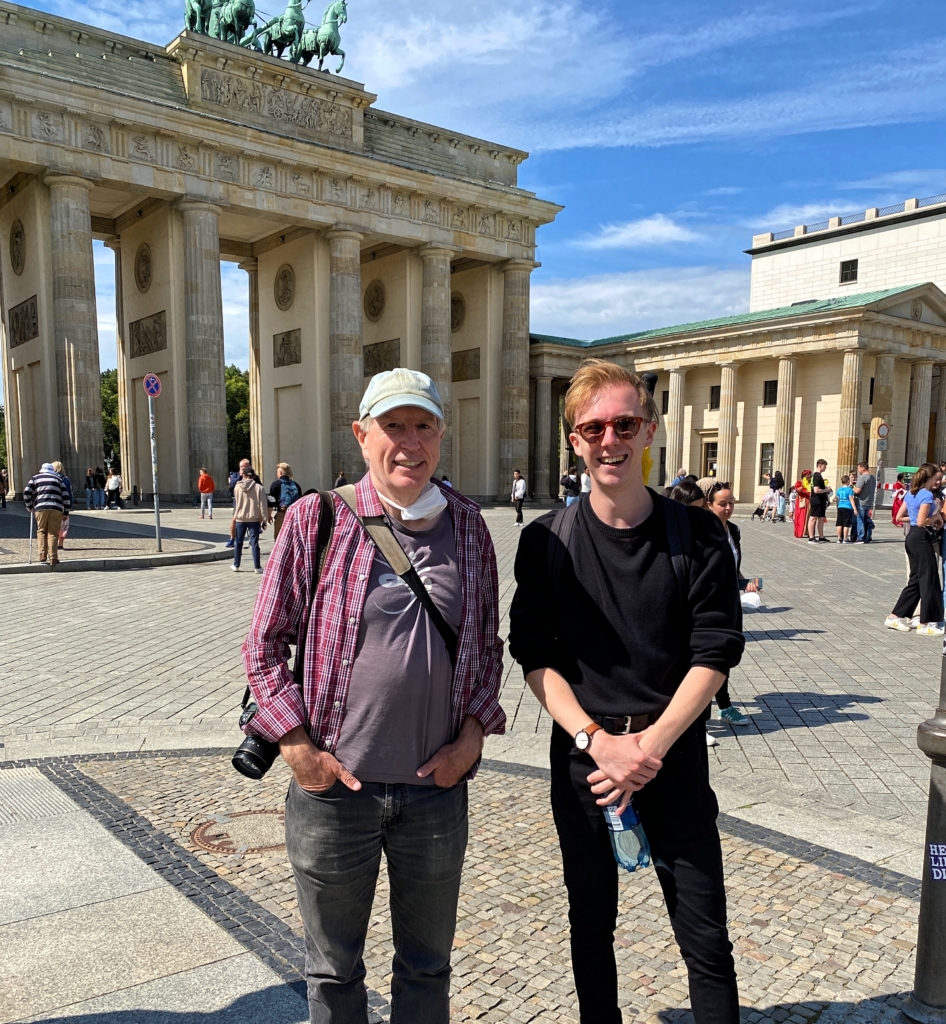
In the photo below, I’m with JR of Moon Dog Tours, who is excellent in giving “alternative” Berlin walking tours with an emphasis on street art. He’s from Kansas City, MO, close to where my father was born and raised. He has lived in Chicago, San Francisco, NYC, various places in Asia and now Berlin. I can’t recommend him enough for those interested in this type of experience.

Brandenburg Gate
The Brandenburg Gate is the landmark most associated with Berlin, similar to Big Ben in London, Eiffel Tower in Paris and the Statue of Liberty in New York City.
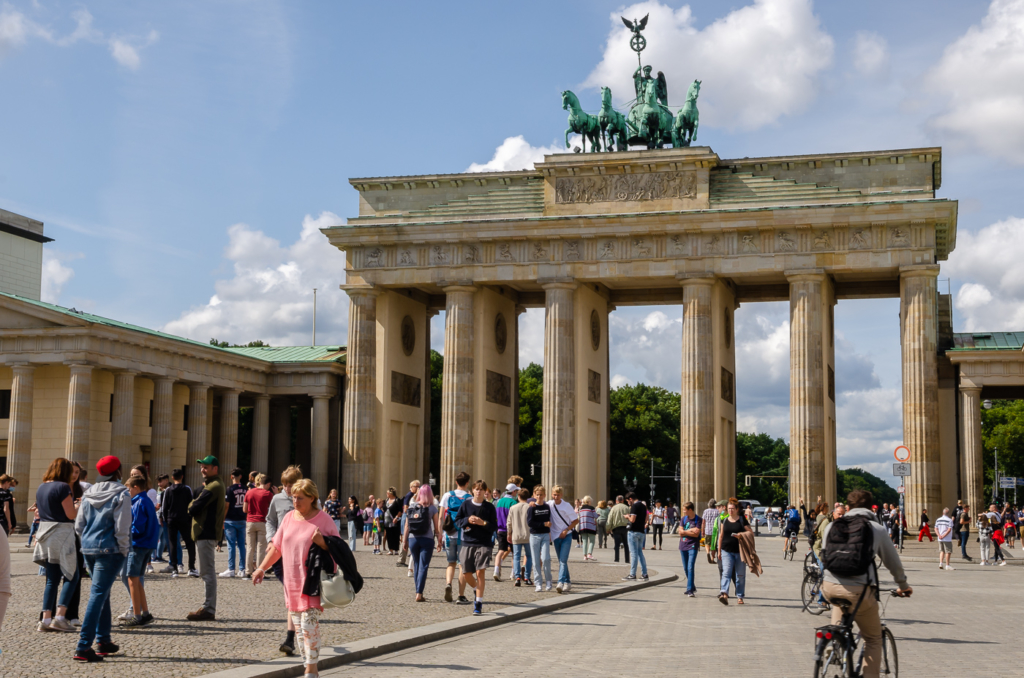
For the last three centuries, it’s been part of German history. In the 1730s, Prussian King Frederick William I (this was before a unified Germany) ordered the building of “customs” walls with 18 small gates to tax people as they traveled in and out of town. In the 1780s, King Frederick William II wanted one of the gates to be more impressive and grander. The structure was completed in 1791 in a Neoclassical style and capped with the “Quadriga,” a statue of the goddess of victory driving a chariot pulled by four horses. A decade later, Napoleon occupied Berlin, dismantled the Quadriga and shipped it to Paris. In 1814, Prussian soldiers occupied Paris after Napoleon’s defeat and the Quadriga was returned to Berlin. It was installed on the gate with an added iron cross as a symbol of Prussia’s victory over France.
When Hitler assumed power, he had red flags of the Nazi party draped on the monument. The Gate survived the Allied bombings in WWII. After the war, it was under the control of Communist East Berlin and a boundary between East and West Berlin. The Communists removed the iron cross but it was restored after the unification of Germany. In 1987, US President Ronald Reagan addressed more than 20,000 at the Gate and decried “Mr. Gorbachev, tear down this wall.”
Reichstag
The Neo-Renaissance building was completed in 1894. It was the home of the German parliament, Reichstag, until the end of WWII.
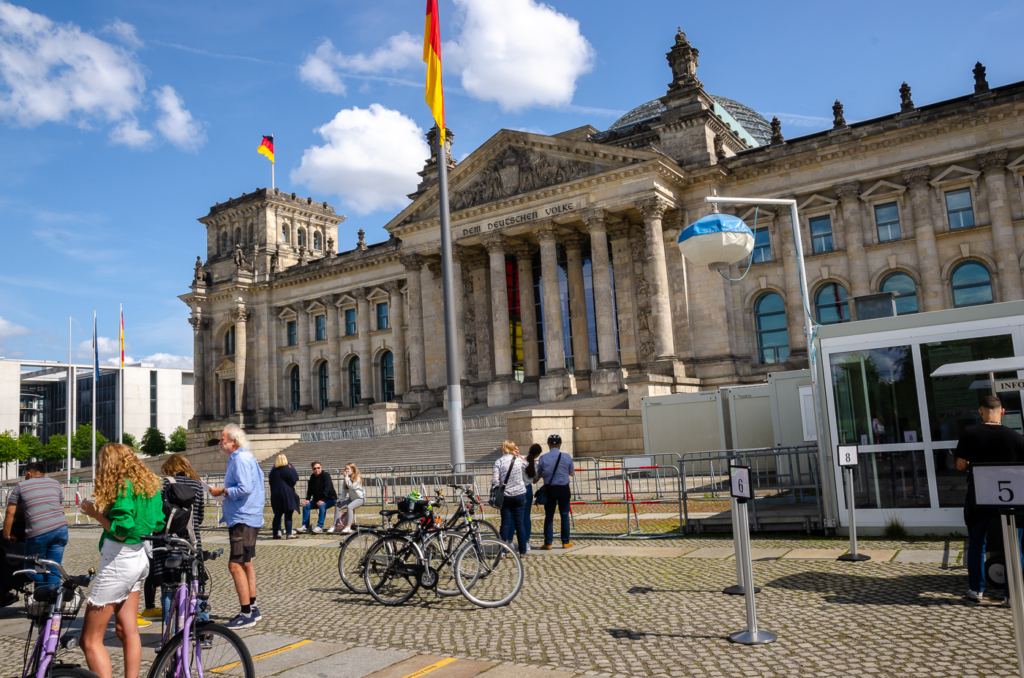
In 1933, there was a fire set in the building, allegedly by a Communist sympathizer, but it could’ve been by Nazis. Nazi propaganda used the event to whip up a frenzy about a Communist revolt, which lead to Hitler being appointed Chancellor. Swiftly, Hitler assumed dictatorial powers and the Reichstag then met infrequently and only to rubber stamp Hitler’s laws. During WWII, Allied bombings destroyed what was left of the dome after the fire.
The building was unused after WWII, then partially renovated and starting in the 1970s used as a museum of German history. After unification in 1990, Berlin became the capital and the Reichstag became the home of the Bundestag, the lower house of Germany’s parliament. The building was completely renovated and the Dome was resurrected. The dome is open to the public and can be reached by climbing two steel spiral ramps. We didn’t have advanced tickets (highly recommended) to visit and didn’t want to wait in line to see if any spaces were available.
Holocaust Memorial
The moving and sophisticated Holocaust Memorial consists of 2,711 unique concrete blocks (the number of pages in the Talmud) that continually dips from the perimeter.
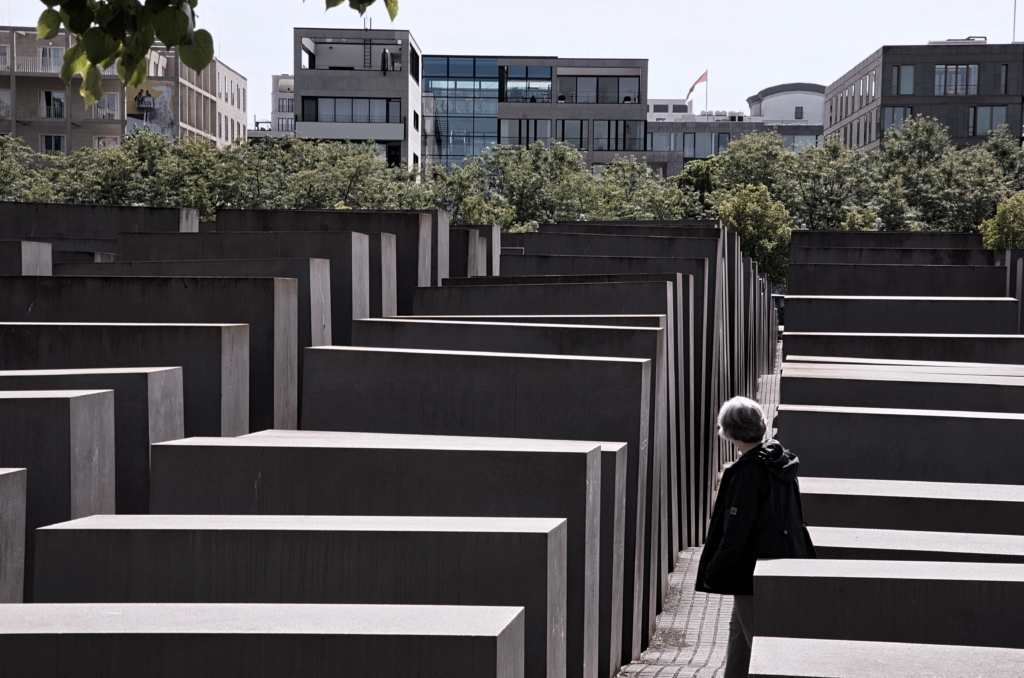
As you walk through, you become disoriented. The temperature drops, it becomes darker and it’s difficult to know where you are exactly. However, it happens almost imperceptibly and is an allusion to how Jews lived when they were inexorably being trapped by Hitler’s Final Solution. It’s also a warning to societies to be careful when governments start encroaching on political democratic processes. This memorial is in the center of the city, close to Brandenburg Gate and the Reichstag, which demonstrates how importantly the German government values it.
Hitler’s Bunker
Hitler’s Bunker (Führerbunker) is now under an apartment parking lot and marked only by a sign.
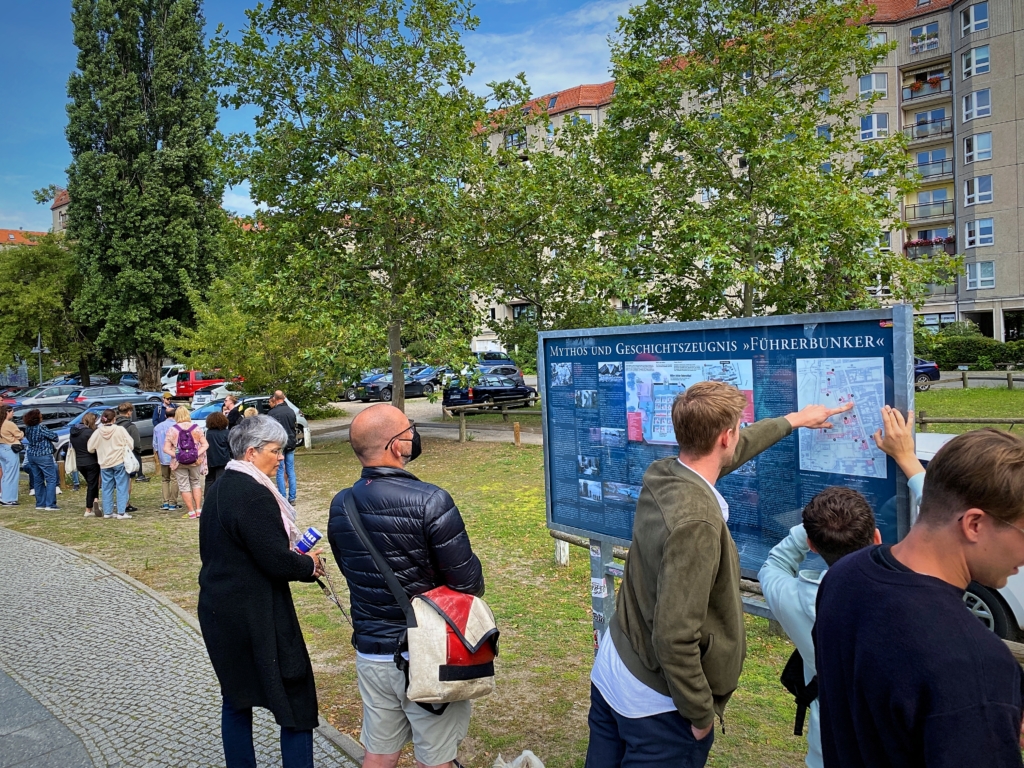
In his last three days, Hitler married Eva Braun and less than 40 hours later they committed suicide on April 30, 1945. Hitler shot himself in the head and she took poison. There are many conflicting versions of what happened to his body, so no one knows for sure.
Tiergarten
Tiergarten is Berlin’s largest and most popular inner-city park. It was once the private hunting grounds of the Holy Roman Empire Elector Friedrich Wilhelm. In the 1800s, Berlin started transforming it into a landscaped park with a small zoo. Maybe because of all these animal connections, we discovered statues of animals, including ones from North America
In any case, it’s a pleasant place to stroll through and take a rest from sightseeing.
Museum Island
The Museum Island in Berlin is a remarkable complex and a UNESCO World Heritage Site. Even if you have little interest in museums, there’s bound to be something that catches your eye. Over two days, we visited three of the five stand-alone museums. Here’s a picture of the Altes (Old) Museum.

We didn’t go in, but admired the expanse of fluted, ionic columns. It houses the artistic and cultural items of the classical Greeks, Etruscans, and Romans.
The Pergamon Museum is named after its most famous piece, the Pergamon Altar, one of the terraces of the acropolis of the ancient Greek city of Pergamon in Asia Minor (now Turkey).
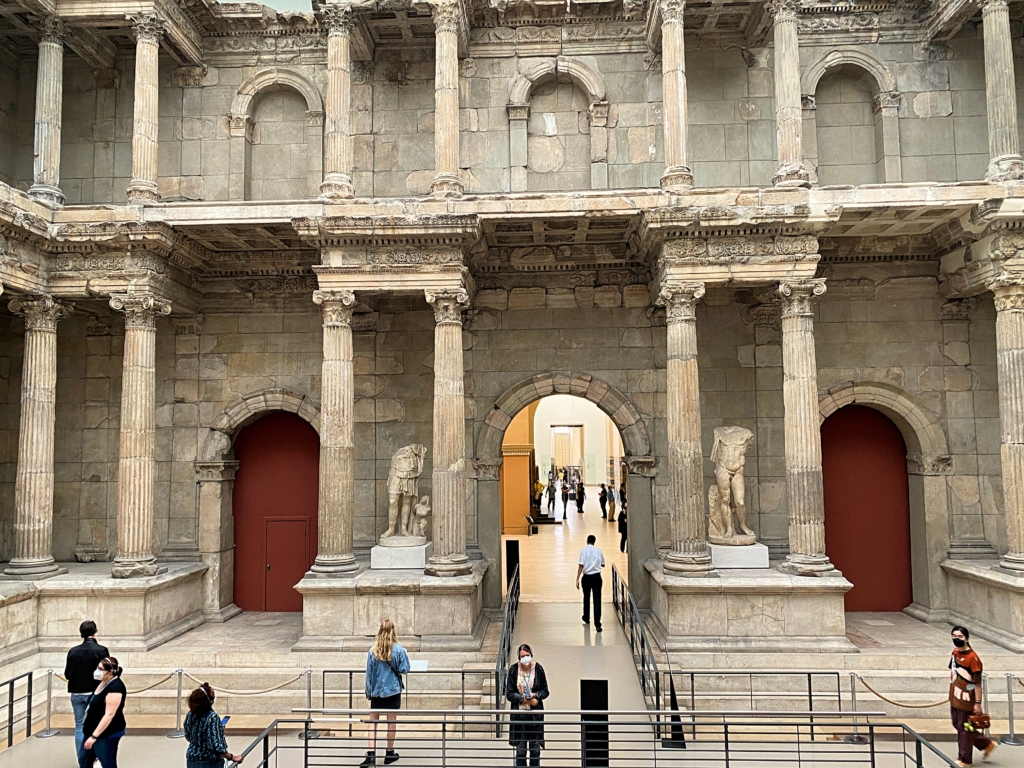
Another Pergamon towering piece is the eighth gate to the inner city of 6th Century BC Babylon (now Iraq).
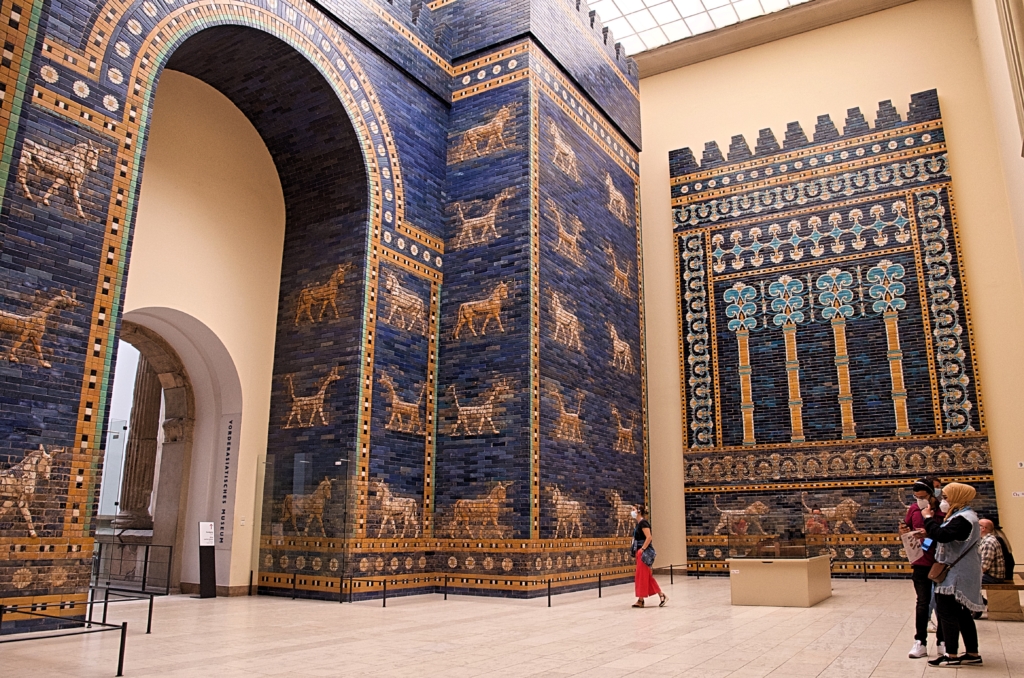
Museum Island’s most famous piece is the bust of Egyptian Queen Nefertiti in the Neues (New) Museum. You aren’t allowed to take a picture of it. It looks exactly like you expect except it’s smaller than a life-sized head.
The Alte Nationalgalerie (Old National Gallery) has a sizable collection of nineteenth century art, probably a majority from German artists. I liked the painting of Flax Barn at Laren by Max Liebermann.
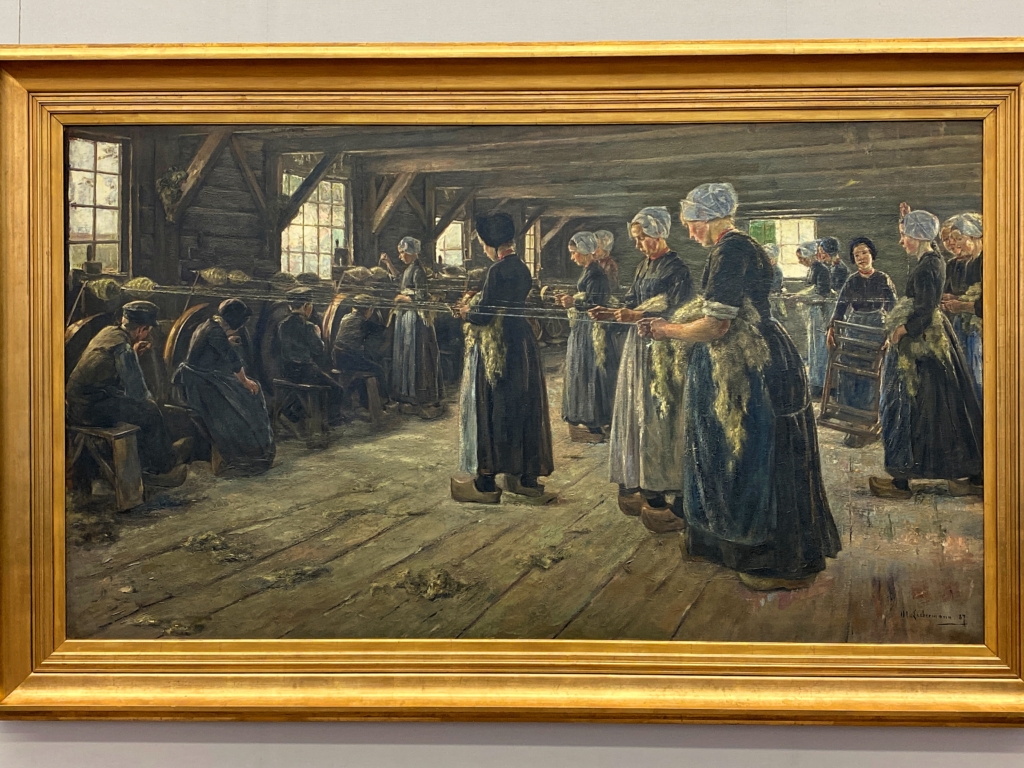
It depicts Dutch women and children in the 1880s spinning flax. It gives an idea of the repetitious work but displays a rhythm of the characters in interesting low light.
There’s also the Neue (New) Nationalgalerie of twentieth century art, by Tiergarten, which is definitely worth a visit, although we didn’t make it and I’m still kicking myself for not going.
Bode Museum is the other stand-alone museum on the island. It’s a domed building with its collection of statues, coins, medallions and Byzantine art. Also, on the island is the Berlin Cathedral, a monumental German Evangelical church bordering the Lustgarten. The final building worth noting is the Berlin Palace which reconstruction was finished in 2020 for an expensive (€590 million) price tag. It holds collections of African and other non-European art, as well as restaurants and other public facilities.
Checkpoint Charlie
Checkpoint Charlie (the letter “C” in the NATO alphabet) was the entrance used by diplomats and others when crossing between West and East Berlin during the Soviet hegemony.
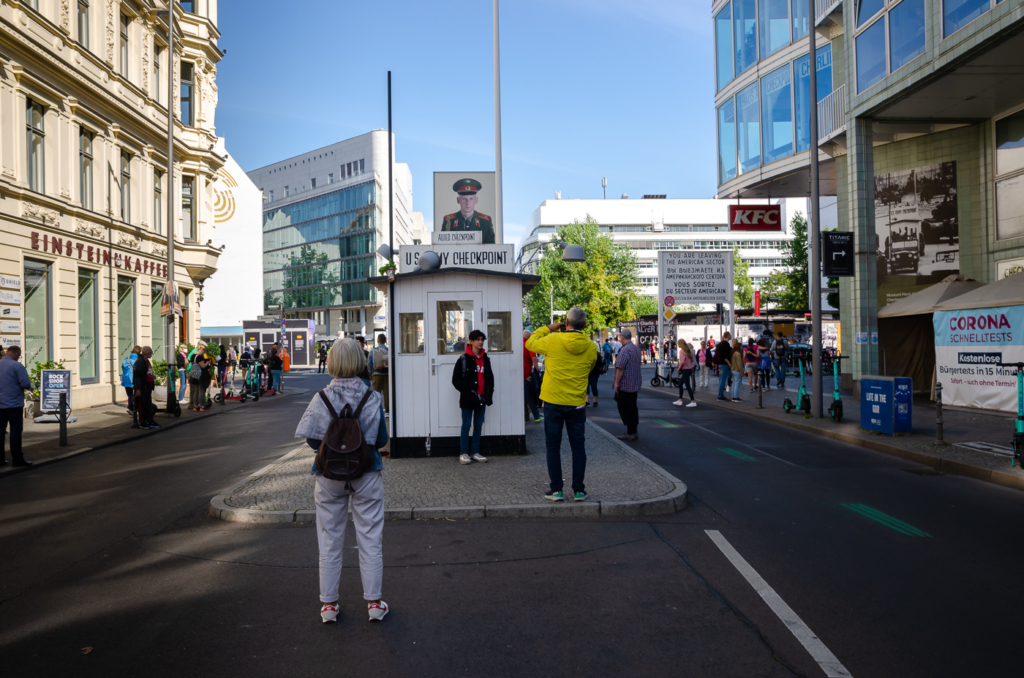
East Germany erected the wall in 48 hours to stop its citizens from defecting. On the Western side, there was widespread graffiti. In October 1962, there was a six-day standoff at CC between American and Soviet tanks which could have escalated into a hot war. There were actually two walls with a “death strip” in between.
Alexanderplatz
Alexanderplatz is a busy square and transport hub in central Berlin. It’s often used to meet someone or start walking tours. Street musicians often play here, even in covid times.
Berlin TV Tower
In the 1960s the East German government built this TV Tower called Berliner Fernsehturm, to a large extent to show the prowess of the socialist system. It’s over 360 meters (1180 feet) high and probably looked cheesy from the beginning. It is a good landmark when walking in the center of Berlin.
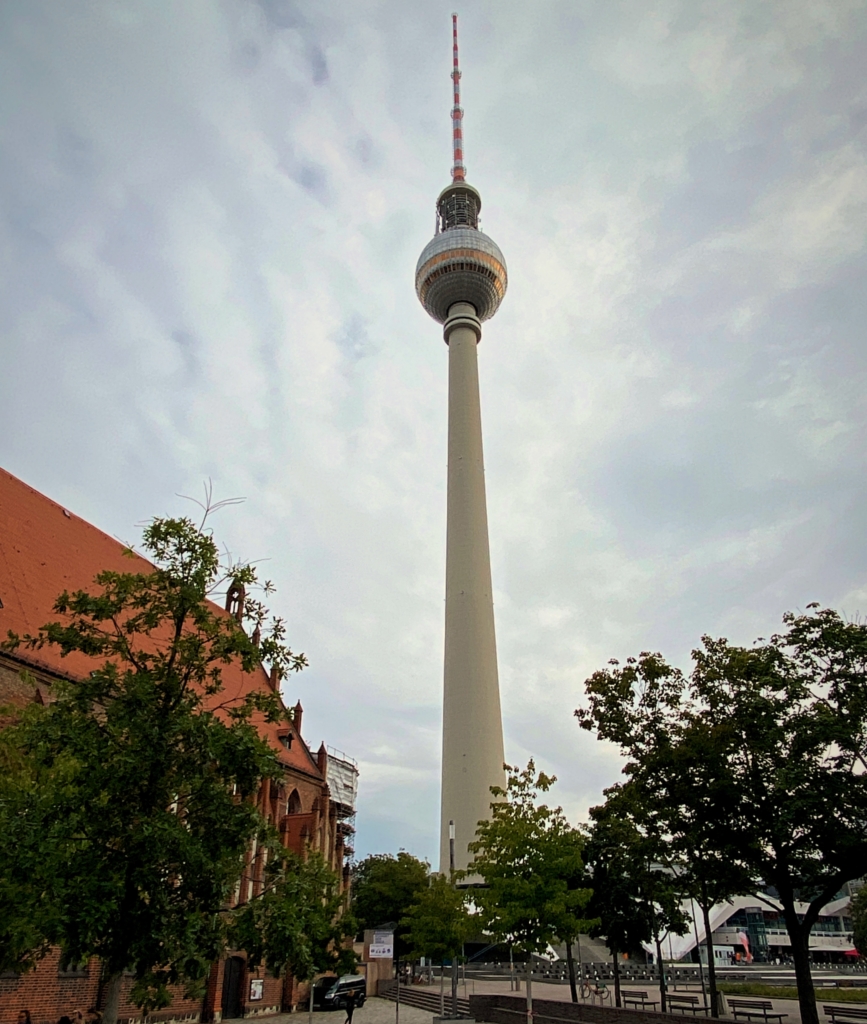
Kreuzberg
It’s a gritty place amid graffiti and bicycles with busy bars and restaurants.
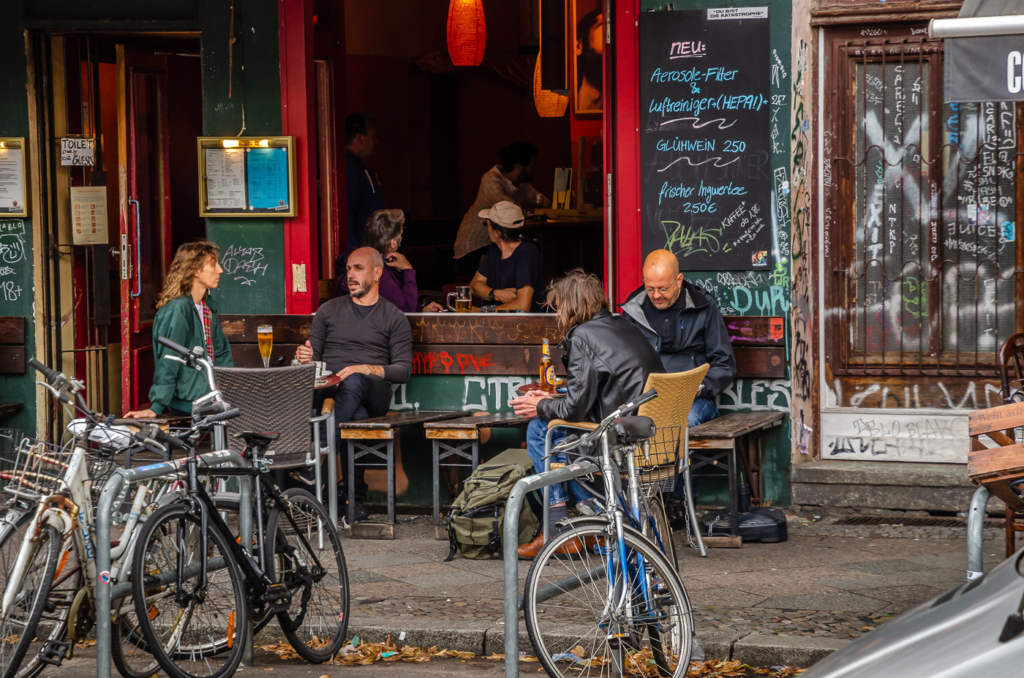
It’s also home to Turkish, Syrian and many other immigrants.
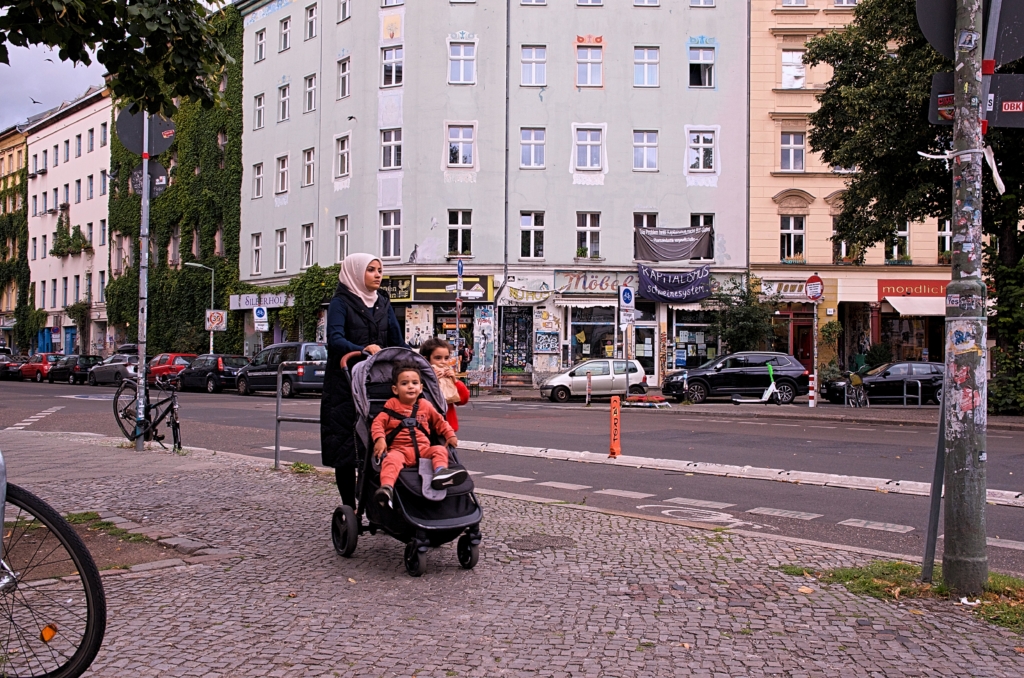
For decades, it’s been a bohemian and politically liberal place.

Outdoor Murals and Graffiti
Berlin is a renowned city for street art and graffiti. Here are some areas to explore.
Some of the wall art is “paste up”, rather than paint. Artists use this method because if they’re caught, the fine is much less than illegally painting. See the artist SOBR’s project, “It’s Time to Dance” on the Dircksenstrasse Elevated Railway.
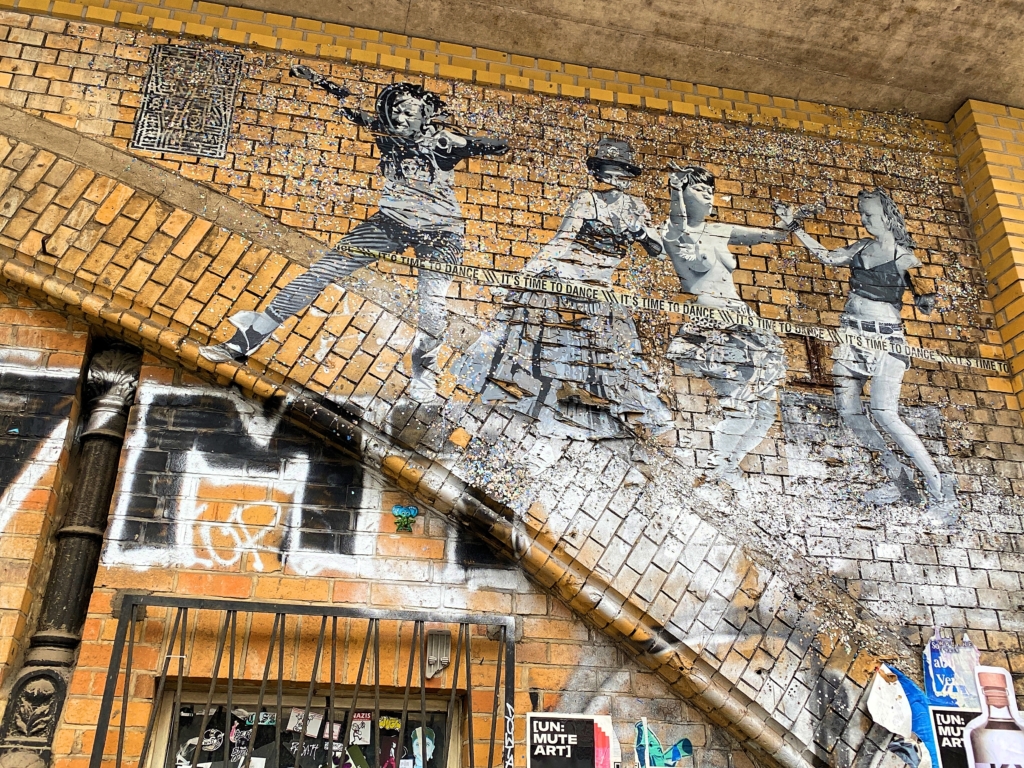
In the Haus Schwarzenberg Street Art Alley is a mural of Otto Weidt, who had a broom and brush manufacturing business which employed blind people. When the Gestapo began to arrest and deport his Jewish employees, he fought to secure their safety by falsifying documents, bribing officers and hiding them in the back of his shop.
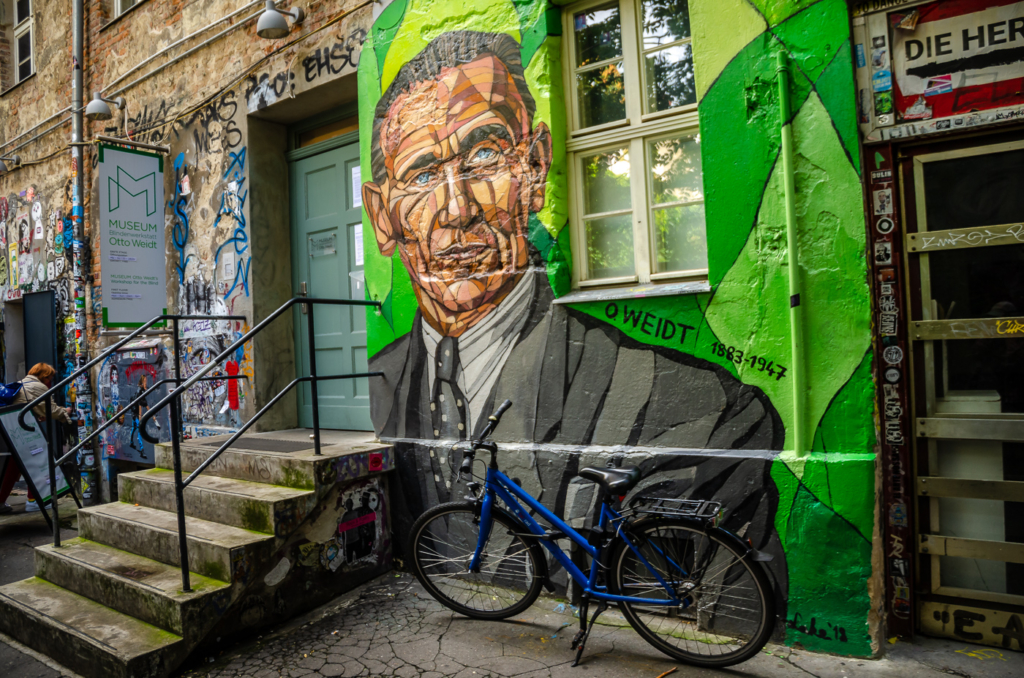
French artist Victor Ash’s Astronaut Cosmonaut in Kreuzberg has achieved a cult status for Berlin. Literally it refers to the first East German in space in 1978. Metaphorically, it represents the desire to escape reality, especially in light of Germany’s tumultuous history in the 20th century.

In YAAM (Young African Art Market) there are many great murals including this one of Fela, the most famous pioneer of Afrobeat and one of my all-time favorite musicians.
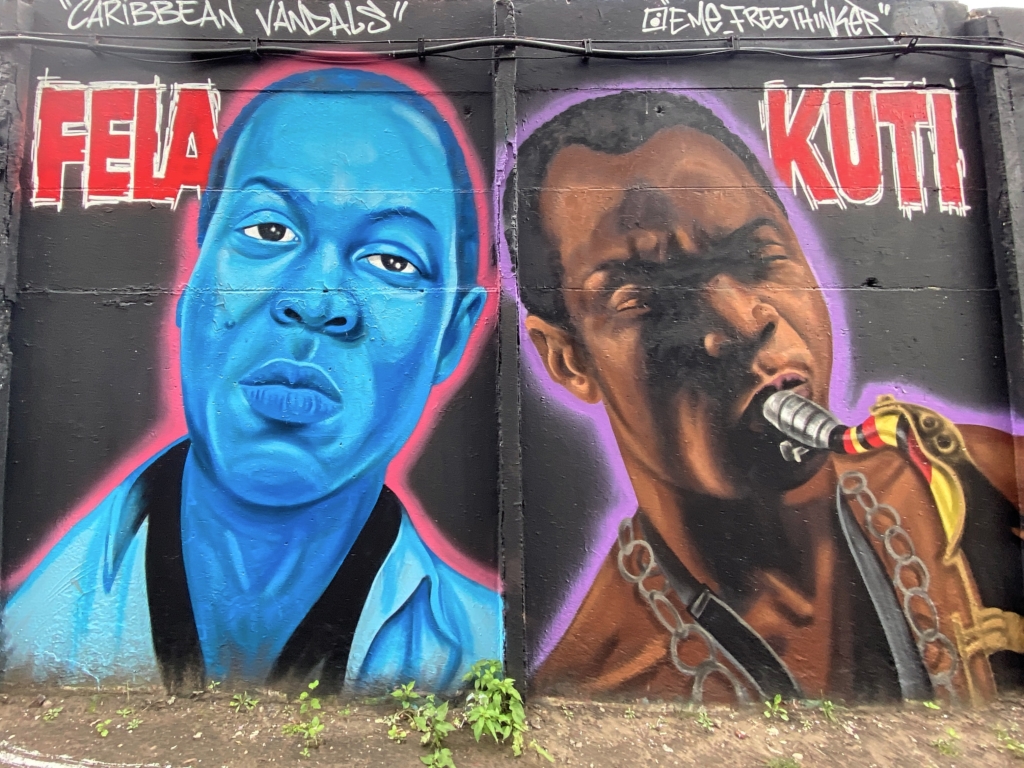
Stasi Museum
Stasi was the state security service of the German Democratic Republic (East Germany’s Communist Government, from 1945 to 1990). They were ruthless in spying on the population primarily through a vast network of citizens turned informants (which they usually blackmailed or gave some incentive, sometimes as small as a box of chocolates once a month). They kept detailed records on almost everyone. “The Life of Others” is an excellent film examining this subject.
We took the U-Bahn to the Lichtenberg neighborhood of Berlin, walked a few blocks and saw a sign to the Stasi Museum. When we arrived, it was apparently in the middle of an apartment complex of over 30 buildings. This seemed odd but eventually we were informed that all of these buildings were once part of the Stasi headquarters. Before the end of the Communist rule, there were over 90,000 Stasi employees (not counting informants) in a country of 20 million – 4.5% of the population! The two-floor museum gave a thorough overview of their nefarious and brutal practices.
The Stasi had a sort-of coat of arms with a rifle, hammer and sickle.
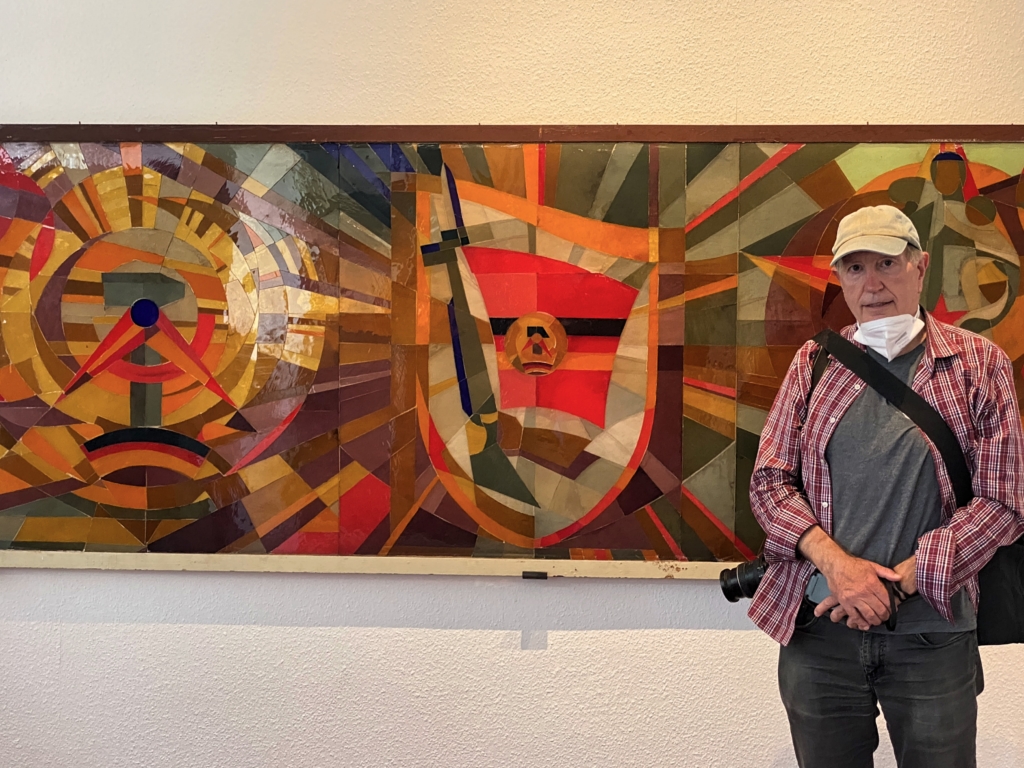
Here’s a paddy wagon which kept up to 5 prisoners in separate cells with no windows.
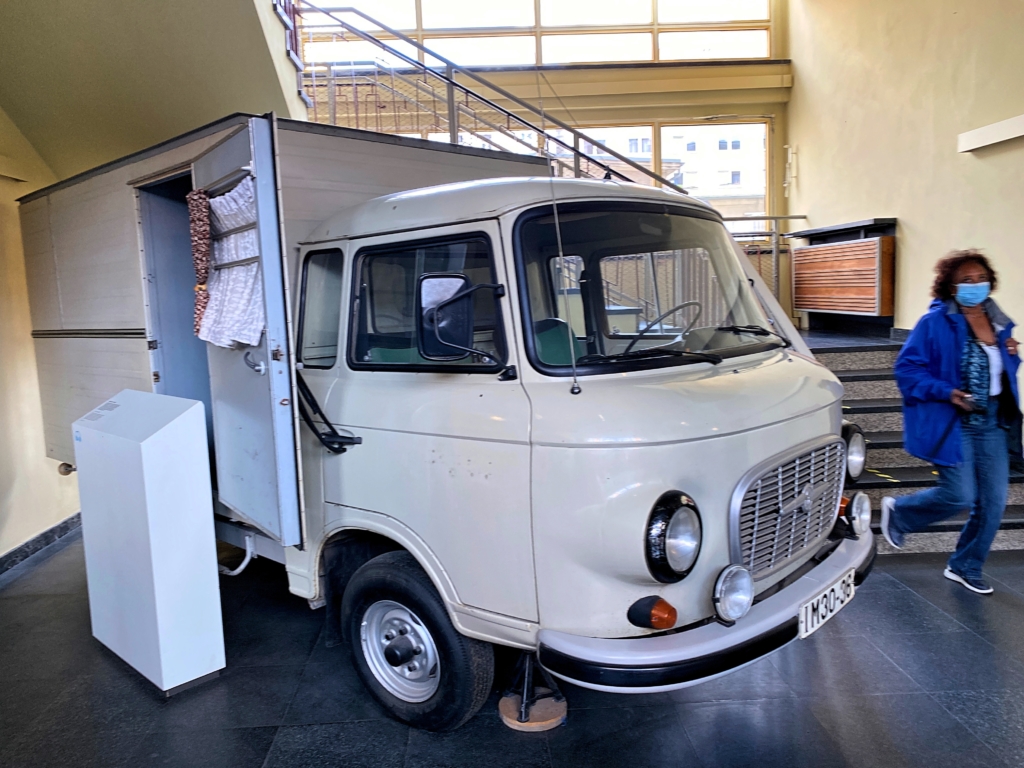
The leadership was staid, old white men right out of a John le Carré novel.
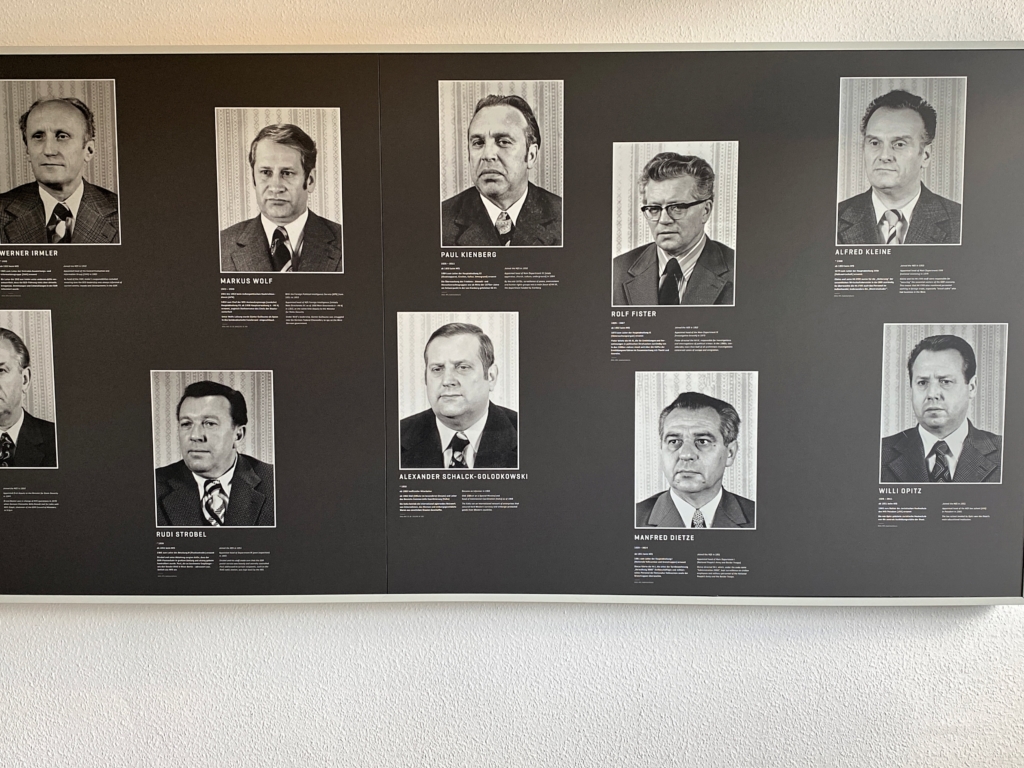
While wandering through the Tiergarten, I couldn’t resist taking a picture with the last remaining Stasi officer😁
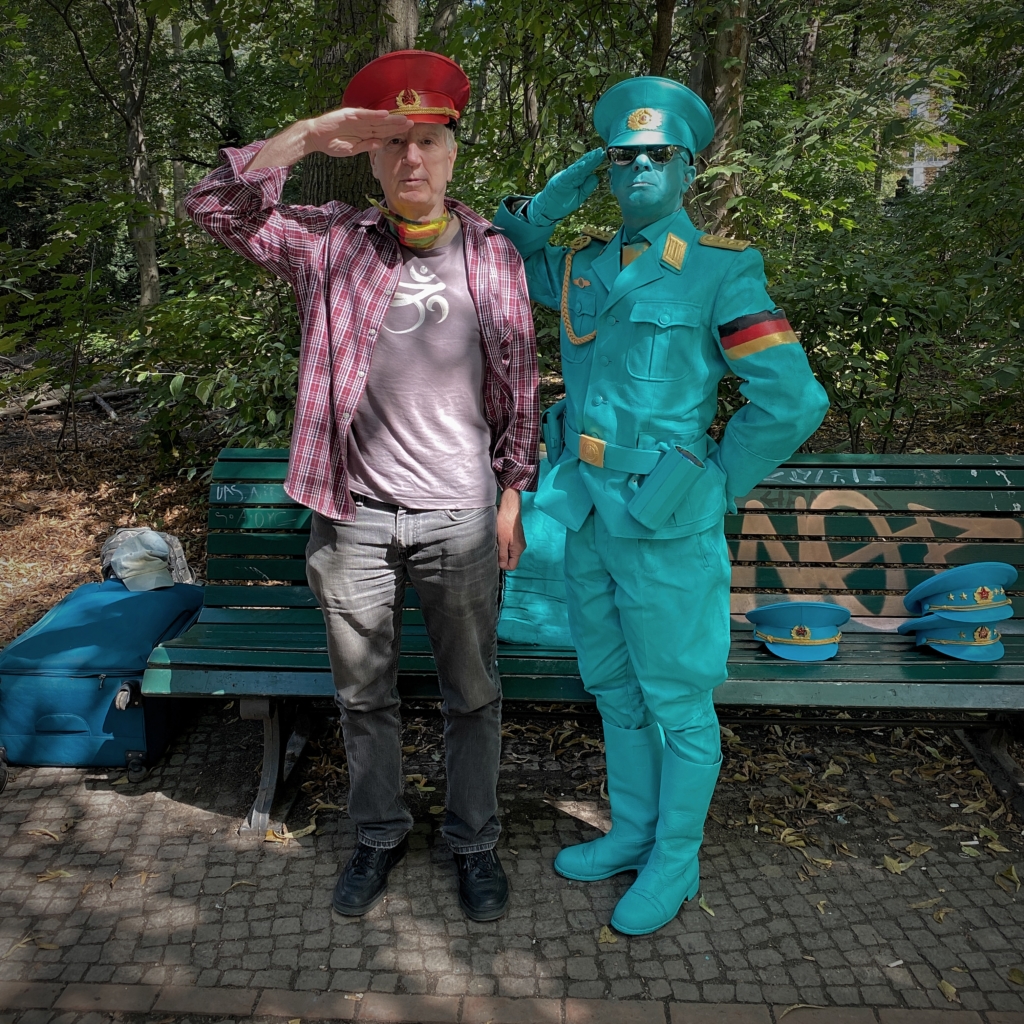
Final Thoughts
A treat of travel is running into friends unexpectedly. Just a few days before we arrived, we were informed that Alexander, a son of our good friends Sussane and Itzhak, had been living there for a few weeks working on a Mercedes assembly line in order to experience the automotive manufacturing process. He’s going to the University of Leicester in the UK studying industrial design. Our midnight dinner was at a Mexican restaurant where all the waiters were from Bangladesh.
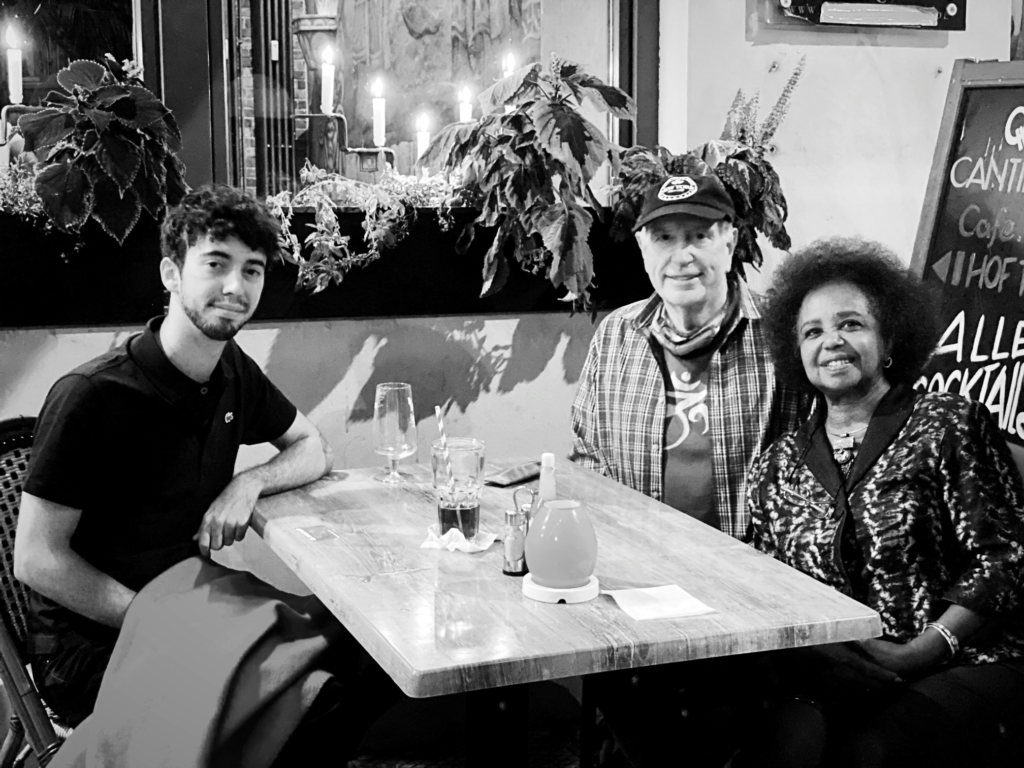
Berlin is my type of city. It has eccentricities, bohemianism and a party culture contrasting with prominent museums, military history and classical music. At any time, there’s someplace to go to, depending on your mood. It took me way too long to make it here but I plan to return many times!

